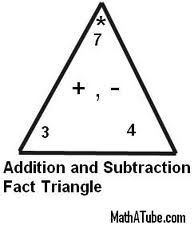Posted by kavery508 | Posted in Uncategorized | Posted on February 10, 2014
 100 Day is here! Thank you for working with your child to develop a mathematical understanding of 100 and sending in your projects–they look awesome! Monday we’ll be sharing and analyzing the works to share the wealth of knowledge they contain! The display will be set up all week: there’s still time to get in on the learning if you missed the deadline. Because we’ll be spending math time on number sense and patterns to 100 on Monday, look for a separate math homework sheet (e.g. not in the homework packet).
100 Day is here! Thank you for working with your child to develop a mathematical understanding of 100 and sending in your projects–they look awesome! Monday we’ll be sharing and analyzing the works to share the wealth of knowledge they contain! The display will be set up all week: there’s still time to get in on the learning if you missed the deadline. Because we’ll be spending math time on number sense and patterns to 100 on Monday, look for a separate math homework sheet (e.g. not in the homework packet).
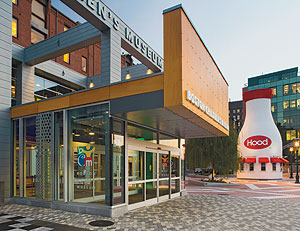 This is the last week to return permission slips and money for our field trip coming up in March. Please make checks payable to FSS Student Activity Fund. Reminder: Your child will need to be driven to school that morning, instead of taking the bus! If you need help arranging a carpool option, let me know–or you could use our class list of addresses/phone numbers to find others near you. The field trip buses leave promptly at 8:30, which is when the first of the school buses arrive for the day.
This is the last week to return permission slips and money for our field trip coming up in March. Please make checks payable to FSS Student Activity Fund. Reminder: Your child will need to be driven to school that morning, instead of taking the bus! If you need help arranging a carpool option, let me know–or you could use our class list of addresses/phone numbers to find others near you. The field trip buses leave promptly at 8:30, which is when the first of the school buses arrive for the day.
 We will exchange valentines this Friday as a way of boosting our caring classroom community. If you will be participating, please send in one for each student (there are 20 in all). We’ll be trading valentines at snack time. Though we don’t do parties with food anymore, you may send in something special for your child alone to eat to mark the occasion!
We will exchange valentines this Friday as a way of boosting our caring classroom community. If you will be participating, please send in one for each student (there are 20 in all). We’ll be trading valentines at snack time. Though we don’t do parties with food anymore, you may send in something special for your child alone to eat to mark the occasion!
This week we will be learning to use Fact Triangles to practice math facts. These can be a very useful tool because they condense math facts into a visual form. A plus/minus triangle need only contain three numbers (e.g. 2, 3, 5). Students are encouraged to memorize just that combination of numbers, from which a “Fact Family” emerges: 2 + 3 = 5; 3 + 2 = 5 (we call those two Turnaround Facts); 5 – 3 = 2; and 5 – 2 = 3. That’s four math facts for the price of one triangle–lots of bang for the buck! It can be a really powerful tool. Here’s more on the how and why: http://instruction.aaps.k12.mi.us/EM_parent_hdbk/activities.html
And while the homework packet has a few triangles in it, here are more: http://donnayoung.org/math/tricards.htm
And here is a downloadable game that mimics how they will be used here at school: http://elementarysoftware.com/triangles/triangle.html
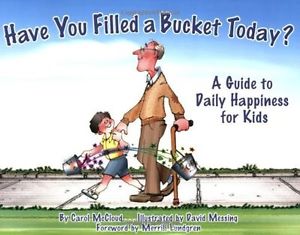 In addition to Valentine’s Day, our class will further the aims of a caring classroom community by sharing the wonderful book, Have You Filled A Bucket Today? (McCloud, 2006). The premise is that we all have emotional and psychological needs, and metaphorically when we meet those needs and help others to do the same, it’s like filling a bucket. Young children are just beginning to understand that others have needs of their own, and this is a great way to help things appear more concrete for them. Along with all of Floral, we will spend time exploring these concepts, culminating in our monthly School Meeting on Friday.
In addition to Valentine’s Day, our class will further the aims of a caring classroom community by sharing the wonderful book, Have You Filled A Bucket Today? (McCloud, 2006). The premise is that we all have emotional and psychological needs, and metaphorically when we meet those needs and help others to do the same, it’s like filling a bucket. Young children are just beginning to understand that others have needs of their own, and this is a great way to help things appear more concrete for them. Along with all of Floral, we will spend time exploring these concepts, culminating in our monthly School Meeting on Friday.
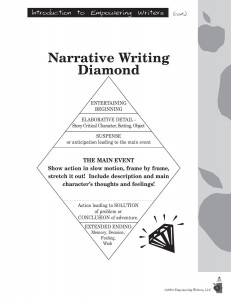 Our writing work involving Entertaining Beginnings when starting personal narratives continues this week. We will learn the power of starting our pieces with a question to hook the reader. Boring opening sentence: I went on a roller coaster. It was fast. Better: Have you ever gone so fast you felt like you were flying? That’s just what happened to me the time I went on a roller coaster last summer.
Our writing work involving Entertaining Beginnings when starting personal narratives continues this week. We will learn the power of starting our pieces with a question to hook the reader. Boring opening sentence: I went on a roller coaster. It was fast. Better: Have you ever gone so fast you felt like you were flying? That’s just what happened to me the time I went on a roller coaster last summer.
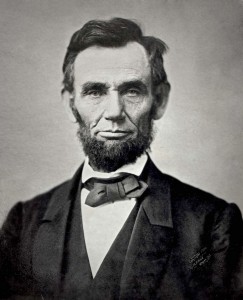 In Social Studies, we will learn about the extraordinary life of Abraham Lincoln and analyze the traits that made him successful. We will tie that into the importance of the office of the presidents in advance of President’s Day coming up.
In Social Studies, we will learn about the extraordinary life of Abraham Lincoln and analyze the traits that made him successful. We will tie that into the importance of the office of the presidents in advance of President’s Day coming up.

We have begun initial explorations of economics by learning what goods are and how to distinguish between wants and needs (in economics, only clothing, food and shelter and how they affect our personal economies and those of the community/world). What’s important at this age is that children begin to understand that goods and services affect what most people do every day, and that in turn affects other people. When you’re driving around town, or working/shopping online, or using anything in which cost plays a factor, encourage your child to think about how and why the goods and services that impact our everyday lives are there.
Our blog will be on vacation until 2/24. I wish you a happy holiday and vacation, and thanks for your continued work on behalf of your child!
Reference: McCloud, C. (2006). Have You Filled a Bucket Today? Northville, MI: Nelson Publishing & Marketing

